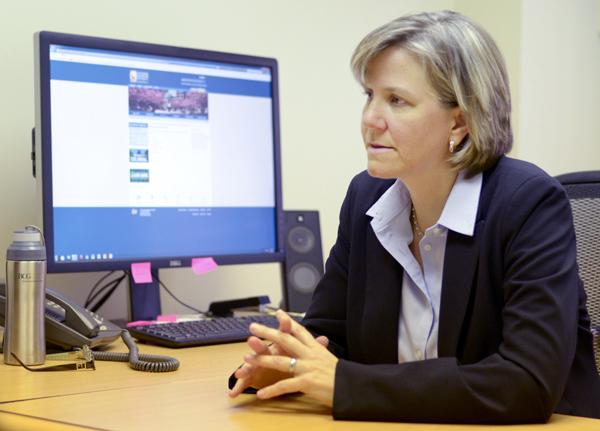
Correction appended
The University accepted 64 percent of its early decision applicants this year, a 20-point spike and the highest rate in five years after a steep drop-off in applications.
The move, which administrators say was part of its strategy to improve the academic credentials of its incoming class, marks a shift in admissions tactics and puts GW out of line with many of its competitors who remain highly selective.
GW’s enrollment manager Laurie Koehler said declining selectivity is all part of the plan. She said she is unconcerned by this year’s 20-point rise in acceptance rate because admitted students actually scored slightly better than last year’s pool.
The median SAT scores of early decision admits ticked up by about 30 points, with the middle 50 percent this year scoring between 1190 to 1320. ACT scores also increased slightly.
She said these are the effects of the University’s move to exclusively use the Common Application, instead of opening up its own application.
“The decision to move to exclusively using the Common Application was made to bring in a high quality applicant pool and thus a high quality enrolling class. The Early Decision numbers so far remind us of the importance of focusing on whom we enroll,” Koehler said.
In past years, the admissions office counted applications from GW’s own separate form, which did not require a $75 fee upfront. Students last fall had to submit all materials at once through the Common Application.
GW received 1,107 early decision applications and admitted 712 students, according to a Wednesday release. Last year, it admitted 960 out of 2,157 applicants.
By admitting fewer students early decision, administrators will now feel pressure to admit more regular decision applicants to fill residence halls and guarantee tuition dollars. If the University misses its enrollment goal, it might have to enroll a larger class next year to fill the gap.
Koehler said she expected a dramatic drop because a large portion of students have historically applied through GW’s application.
“By removing the GW application, we have restricted this pool, but are seeing more serious applicants through the streamlined application process,” she said.
That means the University’s overall acceptance rate “will be markedly higher than in years past,” Koehler wrote in a release, though she maintained that it would still be competitive with GW’s peers.
She predicted that early decision applications would drop because of the “multiple hoops students had to jump through” as well as having to pay for their fees upfront.
Koehler, the University’s first-ever enrollment manager, came last summer to craft a data-driven recruitment strategy as GW’s admit rate and application numbers have stagnated over the last three years.
The University’s early admissions rate has fluctuated over the past decade. It accepted the least amount of applicants – 36 percent – in 2011.
While GW said the effect was seen across higher education, three schools similar to GW that have released their admissions rates did not see drastic changes in selectivity or application numbers.
Georgetown University admitted 14 percent of its early decision applicants, an increase by one percentage point from last year. The neighboring university, which does not accept the Common Application, received more than 6,700 early applications.
Duke University’s admissions rate dropped to 25 percent this year after receiving the largest number of early decision applications in the school’s history.
Christoph Guttentag, the dean of admissions at Duke, said the university planned to only accept the Common Application this year, but backtracked after students reported glitches with the online system.
Northwestern University, which exclusively uses the Common Application, saw its early admission rate shift from 33 to 32 percent after an increase in applications.
Melissa Clinedinst, a researcher at the National Association for College Admission Counseling, said some applicants might have learned too late that GW used the Common Application exclusively.
“Students might not have known about it until late in the game,” Clinedinst said.
– Nicole Dunsmore contributed reporting
This post was updated March 8, 2014 to reflect the following correction:
The Hatchet incorrectly reported that median SAT scores for early decision applicants increased by 10 points. The median actually increased by 30 points. We regret this error.







